 W
WAmblycorypha insolita, known generally as the Big Bend oblong-winged katydid or Big Bend false katydid, is a species of phaneropterine katydid in the family Tettigoniidae. It is found in North America.
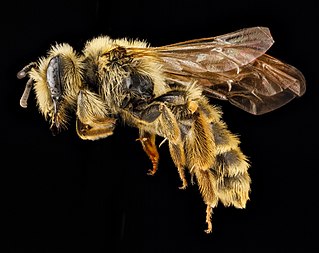 W
WThe death camas miner bee, is a species of miner bee in the family Andrenidae. Another common name for this species is death camas andrena. It is found in North America. It specialises in feeding on the highly poisonous Toxicoscordion venenosum and is possibly the only bee that can tolerate its toxins.
 W
WCeriagrion olivaceum is a species of damselfly in the family Coenagrionidae. it is commonly known as rusty marsh dart. This species can be found in south and southeast Asia.
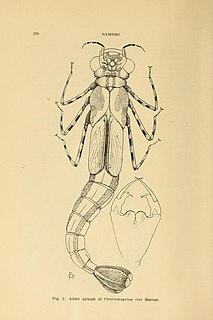 W
WChorismagrion is a monotypic genus of damselflies belonging to the family Synlestidae. The single species of this genus, Chorismagrion risi, known as a pretty relict, is a slender, medium-sized damselfly, mostly black in colour with white markings. It is endemic to north-eastern Australia, where it inhabits streams and large pools in rainforests.
 W
WChorismagrion is a monotypic genus of damselflies belonging to the family Synlestidae. The single species of this genus, Chorismagrion risi, known as a pretty relict, is a slender, medium-sized damselfly, mostly black in colour with white markings. It is endemic to north-eastern Australia, where it inhabits streams and large pools in rainforests.
 W
WChrysomya bezziana, also known as the Old World screwworm fly or screwworm, is an obligate parasite of mammals. Obligate parasitic flies require a host to complete their development. Named to honor the Italian entomologist Mario Bezzi, this fly is widely distributed in Asia, tropical Africa, India, and Papua New Guinea. The adult can be identified as metallic green or blue with a yellow face and the larvae are smooth, lacking any obvious body processes except on the last segment.
 W
WCinygmula subaequalis is a species of flatheaded mayfly in the family Heptageniidae. It is found in southeastern, northern Canada, the eastern United States, and Alaska.
 W
WCoelioxys banksi is a species of leafcutter, mason, and resin bees in the family Megachilidae.
 W
WCoelioxys hunteri, or Hunter's cuckoo-leaf-cutter bee, is a species of hymenopteran in the family Megachilidae.
 W
WGargaphia solani is a subsocial species of lace bug commonly known as the eggplant lace bug. The species was described by Heidemann in 1914 after it aroused attention a year earlier in the United States as an eggplant pest around Norfolk, Virginia. Fink found that the species became an agricultural pest when eggplant is planted on a large scale.
 W
WHomodoxus is a genus of moths belonging to the family Tineidae. It contains only one species, Homodoxus aristula, which is found in Mexico and Guatemala.
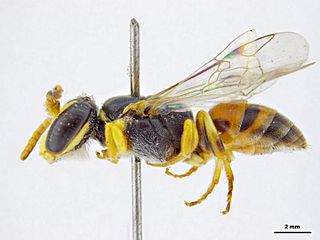 W
WHylaeus sanguinipictus is a bee species endemic to Western Australia. It was described in 1914 from material collected in Yallingup by Theodore Dru Alison Cockerell as Prosopis sanguinipicta.
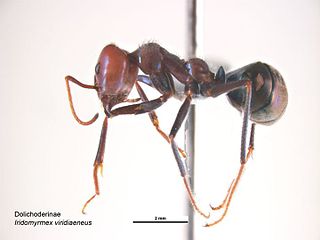 W
WIridomyrmex viridiaeneus is a species of ant in the genus Iridomyrmex. Described by Viehmeyer in 1914, the species is among the most widespread species in Australia of the genus.
 W
WThe jade clubtail is a dragonfly in the Gomphidae family. Its total length is 51 to 55mm.
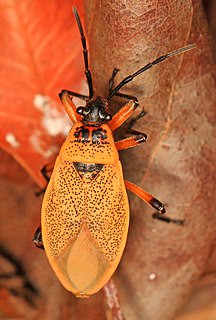 W
WLargus davisi is a species of bordered plant bug in the family Largidae. It is found in North America.
 W
WLinepithema flavescens is a species of ant in the genus Linepithema. Described by William Morton Wheeler and Mann in 1914, the species is endemic to Haiti.
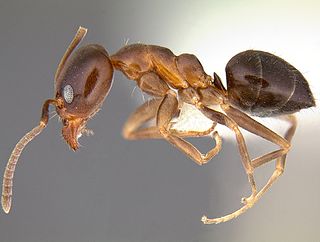 W
WLinepithema gallardoi is a species of ant in the genus Linepithema. Described by Juan Brèthes in 1914, the species is endemic to South America.
 W
WLype diversa is a species of net tube caddisfly in the family Psychomyiidae. It is found in North America.
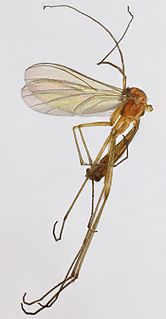 W
WMacrocera parva is a Palearctic species of 'fungus gnat' in the family Keroplatidae.Larvae of species in this genus have been reared from a range of situations including clumps of turf, rotting wood and cave walls and are thought to be predaceous.
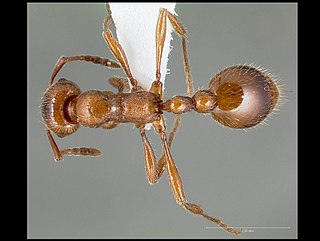 W
WManica hunteri is a species of ant in the family Formicidae.
 W
WMegachile barvonensis is a species of bee in the family Megachilidae. It was described by Theodore Dru Alison Cockerell in 1914.
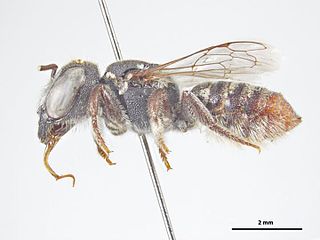 W
WMegachile callura is a species of bee in the family Megachilidae. It was described by Theodore Dru Alison Cockerell in 1914.
 W
WMegachile captionis is a species of bee in the family Megachilidae. It was described by Theodore Dru Alison Cockerell in 1914.
 W
WMegachile fullawayi is a species of bee in the family Megachilidae. It was described by Theodore Dru Alison Cockerell in 1914.
 W
WObolopteryx castanea, the chestnut short-wing katydid, is a species of phaneropterine katydid in the family Tettigoniidae. It is found in North America.
 W
WPheidole vistana is a species of ant and a higher myrmicine in the family Formicidae.
 W
WPlanuncus tingitanus s.l. is a working title for any of the species belonging to the Planuncus tingitanus species group, of the cockroach genus Planuncus. As the exact status of some the species in this group can not be determined without more research, the whole species complex is referred to by the name of the oldest species in the group sensu lato.
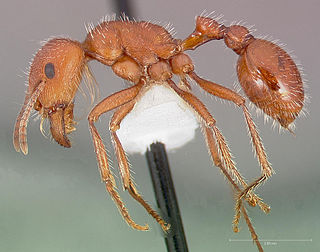 W
WPogonomyrmex maricopa, the Maricopa harvester ant, is one of the most common species of harvester ant found in the U.S. state of Arizona, but it is also known from California, Colorado, New Mexico, Nevada, Texas and Utah, and the Mexican states of Baja California, Chihuahua, Sinaloa and Sonora. Its venom is believed to be the most toxic insect venom in the world.
 W
WPseudotephritis approximata is a species of ulidiid or picture-winged fly in the genus Pseudotephritis of the family Ulidiidae.
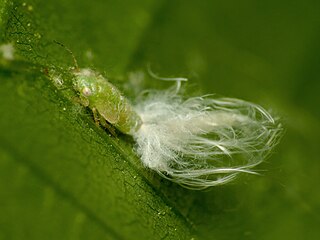 W
WPsylla carpinicola is a species of plant-parasitic hemipteran in the family Psyllidae.
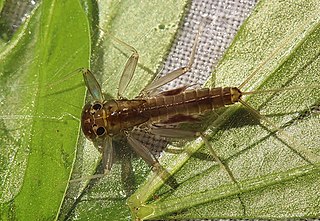 W
WStenacron carolina is a species of flatheaded mayfly in the family Heptageniidae. It is found in North America.